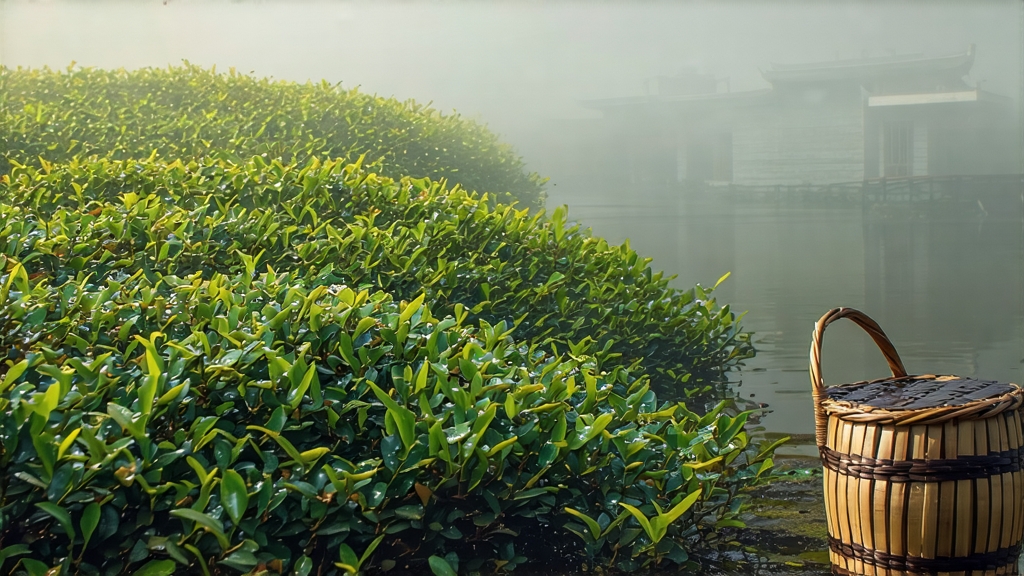
Tucked between the mist-laden banks of Lake Tai and the fruity orchards of Dongting Mountain in Jiangsu Province, Biluochun—literally “Green Snail Spring”—has captivated emperors, poets, and modern connoisseurs for over a thousand years. Its tiny, spiral-shaped leaves may appear unassuming, yet they carry one of the most complex bouquets in the entire green-tea universe: a bright marine note reminiscent of fresh nori, followed by succulent lychee, apricot, and a whisper of magnolia. To understand why this tea is repeatedly listed among China’s Ten Famous Teas, one must journey through its imperial past, its micro-climatic terroir, the painstaking craft that turns a single bud-and-leaf into a velvet coil, and the precise brewing ritual that unlocks its springtime soul.
Historical whispers trace Biluochun’s birth to the Tang dynasty (618-907 CE), yet it was the Kangxi Emperor (r. 1661-1722) who conferred its poetic name. Legend tells that a tea picker, startled by the sudden appearance of a spiraled green snake, dropped her freshly harvested buds into her bosom; the heat of her body inadvertently fixed the green and curled the leaf. Enchanted by the resulting infusion’s fruity perfume, local monks offered it to the touring emperor. Kangxi found the name “Xia Sha Ren Xiang” (“Scary Fragrance”) inelegant and rechristened it “Bi Luo Chun” after the jade-green coils resembling tiny snails and the season of earliest harvest. From that moment the tea became tribute, carried by fast horse and canal barge to the Forbidden City.
Today the appellation “Biluochun” is legally protected within only two micro-zones: Dongting East Mountain (Dongshan) and Dongting West Mountain (Xishan), both islands in Lake Tai. The lake’s vast surface moderates temperature, while peach, plum, and loquat trees interplanted among tea bushes donate volatile esters to the nascent buds. In April, when night temperatures dip to 10 °C and dawn mist lingers until 10 a.m., the tea plant produces extra amino acids and aromatic oils to defend against cold, yielding the signature sweetness and floral lift impossible to replicate even twenty kilometers away.
Unlike many green teas that prize only the bud, authentic Biluochun demands the “one bud with one unfolded leaf” standard, picked when the leaf is still shorter than the bud. Experienced pluckers finish before noon so that the dew-weight does not exceed 5 %, preventing premature oxidation. A master can harvest just 600 g of fresh leaf in four hours—enough, after firing, for barely 120 g of finished tea.
The craft begins the moment the leaf reaches the farmhouse. Traditional kill-green (shaqing) employs a 180 °C wok fired by fruit-tree wood; 1.2 kg of leaf is tossed by hand for precisely 3.5 minutes until the leaf temperature reaches 85 °C, deactivating polyphenol oxidase while preserving the bright chlorophyll. Immediately the temperature is lowered to 70 °C for the first “tuan rou”—a gentle circular pressing that breaks surface cell walls, initiating the spiral shape and releasing sticky pectin that will later give the liquor its silky body. After five minutes the leaves are removed, rolled on a bamboo screen for three minutes to cool, then returned to a 60 °C wok for the second and most critical rou. Here the master’s wrist twists the leaf against the iron surface in a motion compared to “combing a child’s hair”—firm enough to set the curl, tender enough to keep the bud intact. The entire cycle repeats three times, each rou cooler and shorter, until moisture drops to 20 %. Final drying is done over a charcoal brazier covered with white ash; the tea rests 30 cm above the embers for two hours, absorbing a faint smoky note that paradoxically heightens its fruitiness. When complete, 100 g of finished tea contains roughly 9,000 individual coils, each no larger than a paperclip wire.
Grading follows a hierarchy of five official ranks: Supreme, Special Grade 1, Special Grade 2, Grade 1, and Grade 2. Supreme lots, harvested before the Qingming festival (around April 5), exhibit silver-white tips, uniform 6 mm length, and a downy sheen called “white milliard.”